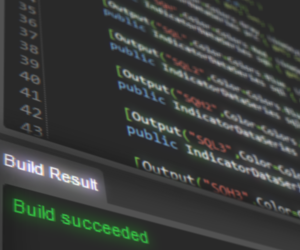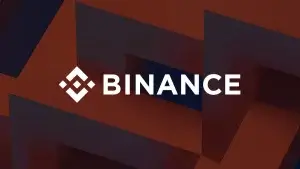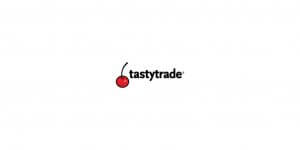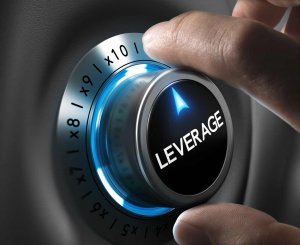MiFID II contains Europe’s very draconian approach toward algo trading
Whilst automated algorithmic trading flourishes within the prop shops of Chicago and New York, European regulatory dissent is amassing. Could even a simple EA or social trading platform now be considered algorithmic trading?

Exactly what constitutes automated trading and what does not?
That is a question that has been answered quite definitively by the European directive on market infrastructure which is due to be set in place in January 2017, namely MiFID II.
The European Securities and Markets Association which is the trans-European Union regulatory authority for electronic trading recently released a questions and answers document on specific MiFID II topics, one being what is called “Direct Electronic Access”, or DEA for short in this age of three letter acroynms, and the other being algorithmic trading.
In the United States, algorithmic trading is commonplace among proprietary trading companies and also among Chicago’s large exchange-traded derivatives participants, just as it is within some of the large interdealer brokers and securities firms.
The US authorities recognize it as part and parcel of the market’s infrastructure and trading landscape, especially among professional traders within institutions and as a result it flourishes.
Even during the implementation of the Dodd-Frank Act’s Volcker Rule, a provision named after former Federal Reserve chairman of the 1970s and early 1980s Paul Volcker, which set out to ban proprietary trading, OTC derivatives firms were exempted from inclusion in this restriction, and to this day the ‘prop shops’ prosper.
Even in the aftermath of Knight Capital (now KCG), one of the country’s largest securities firms that majors on algorithmic trading’s almost ultimate casualty in August 2012 when the firm deployed untested software to a production environment which contained an obsolete function.
That milestone incident happened due to a technician forgetting to copy the new Retail Liquidity Program (RLP) code to one of the eight SMARS computer servers, which was Knight Capital’s automated routing system for equity orders.
RLP code repurposed a flag that was formerly used to activate the old function known as ‘Power Peg’. Power Peg was designed to move stock prices higher and lower in order to verify the behavior of trading algorithms in a controlled environment.[12] Therefore, orders sent with the repurposed flag to the eighth server triggered the defective Power Peg code still present on that server.
When released into production, Knight Capital’s trading activities caused a major disruption in the prices of 148 companies listed at the New York Stock Exchange, thus, for example, shares of Wizzard Software Corporation went from $3.50 to $14.76. For the 212 incoming parent orders that were processed by the defective Power Peg code, Knight Capital sent millions of child orders, resulting in 4 million executions in 154 stocks for more than 397 million shares in approximately 45 minutes.
Knight Capital took a pre-tax loss of $440 million. This caused Knight Capital’s stock price to collapse, sending shares lower by over 70% from before the announcement. The nature of the Knight Capital’s unusual trading activity was described as a “technology breakdown”.
On Sunday, August 5 2012, the company managed to raise around $400 million from a series of investors led by Jefferies in an attempt to stay in business after the trading error. Jefferies’ CEO, Richard Handler and Executive Committee Chair Brian Friedman structured and led the rescue and Jefferies purchased $125 million of the $400 million investment and became Knight’s largest shareholder.
Still, no curtailing of algorithmic trading took place on the grounds of potential disaster such as that experienced by Knight Capital, and no curtailing of the development of sophisticated automated trading systems took place in which latency must be added to execution times to ‘level the playing field’ as touted by Germany’s notoriously anti-electronic trading regulator BaFIN three years ago when it suggested a mandatory time delay in execution to stop those with highly advanced trading systems beating other participants to the best prices.
In Europe, the continued disdain for algo trading continues, with the MiFID II questions and answers on such trading including looking at the level of automation involved, and even considering a very simple, perhaps home-developed program to constitute algo trading.
ESMA considers that the fact that a person or firm undertakes trading activity by means of an algorithm which includes a small number of processes (e.g. makes quotes that replicate the prices made by a trading venue) does not disqualify the firm running such algorithm from being engaged in algorithmic trading.
There is a very ambiguous moot point here, that being the possibility of the inlcusion into this category of social trading systems which select strategies led by specific parameters according to the market risk preferences of retail traders or that allow retail traders to set up an automated execution facility on their retail platform which means that trades are executed automatically according to the following of ‘lead traders’ in the social network.
European regulators are currently looking toward regulating social trading platforms as a type of financial advisory service, thus the terminology here that stipulates that the simplest of algorithms – that could even be an Expert Adviser (EA) – may constitute algo trading.
It is a well known unwritten rule in the electronic trading business that the term automated trading applies to HFT or algorithms used in professional desks or institutions, and not to social trading or mirror trading platforms that emulate the trades of lead retail traders on a social network. Could the regulators of Europe be looking to change this?
To be able to distinguish between the algorithms of different firms, multilateral trading facilities (MTF)s and organized trading facilities (OTF)s will require members or participants to flag the orders generated by algorithmic trading.
The features that will need to be flagged are the different algorithms used for the creation of orders and the people responsible for the orders initiated by the algorithm and the new rules in MiFID II provide for the MTF and OTFs to synchronise the business clocks they use to record the date and time of any reportable event.
MAR 5.3A.2(7) and MAR 5A.5.2(7) requires an MTF or OTF to have the ability to set out the maximum order to trade ratio (OTR) allowed on their venue. To aid the setting of the OTR, RTS 9 prescribes the methodology to calculate the OTR. It is part of the requirement that the venue has to ensure the potential risks of the use of algorithmic trading systems are capable of being managed.
This is quite different to a trader simply sourcing an algo which has been developed by a large institutional firm in the US via an order management system or direct connection and simply automating an entire trading environment with a simple download and set up.
It will be of great interest to see how the British professional desks which work outside of the banking sector will fare if MiFID II continues to remain in place, or if the FCA under a market independent from the European Union (and as a result independent of MiFID II) bearing in mind that independence from MiFID would perhaps stop these scrutinies and rulings entering the highly advanced infrastructure which underpins Britain’s trading ecosystem.









